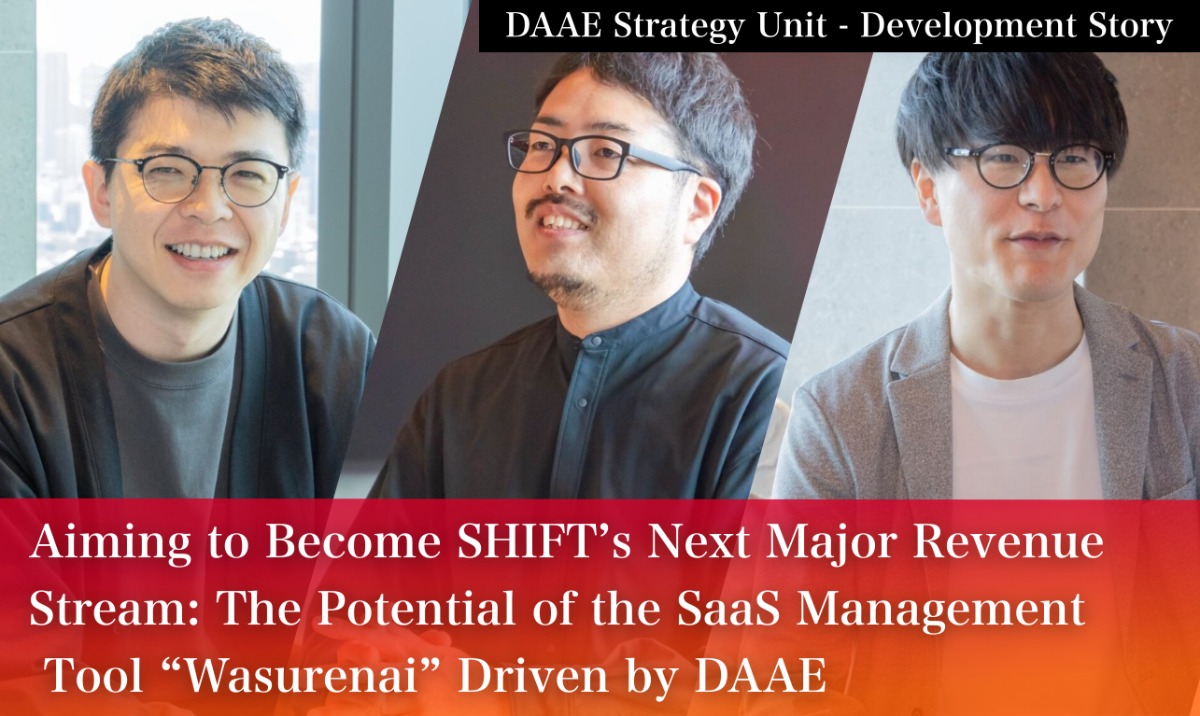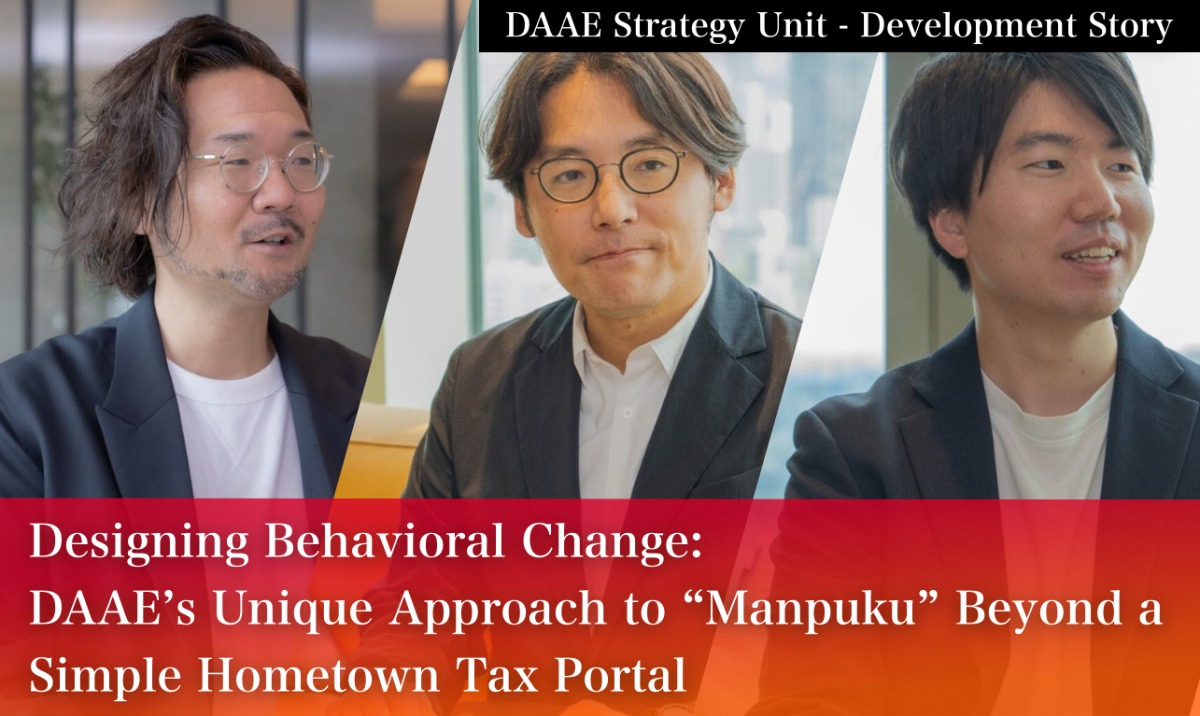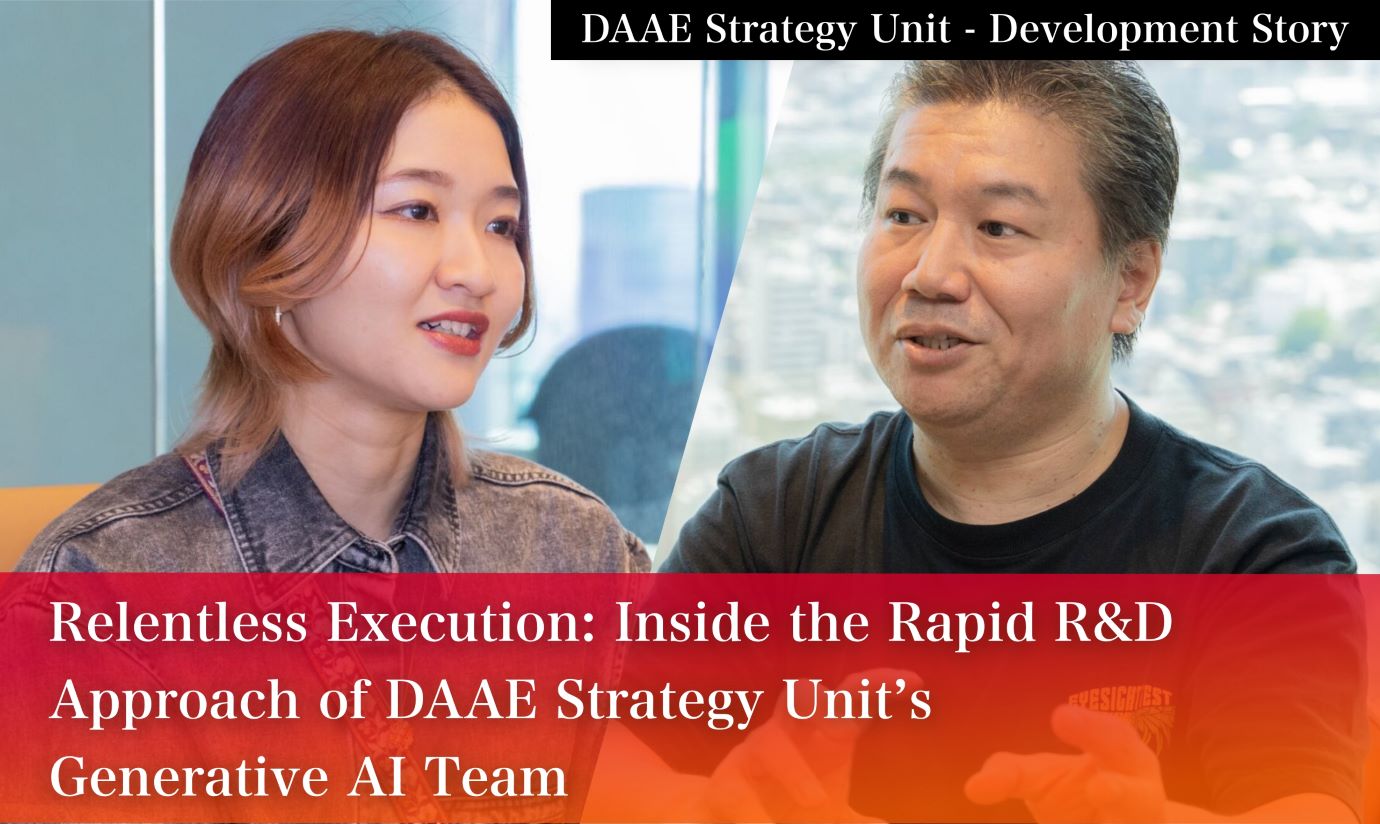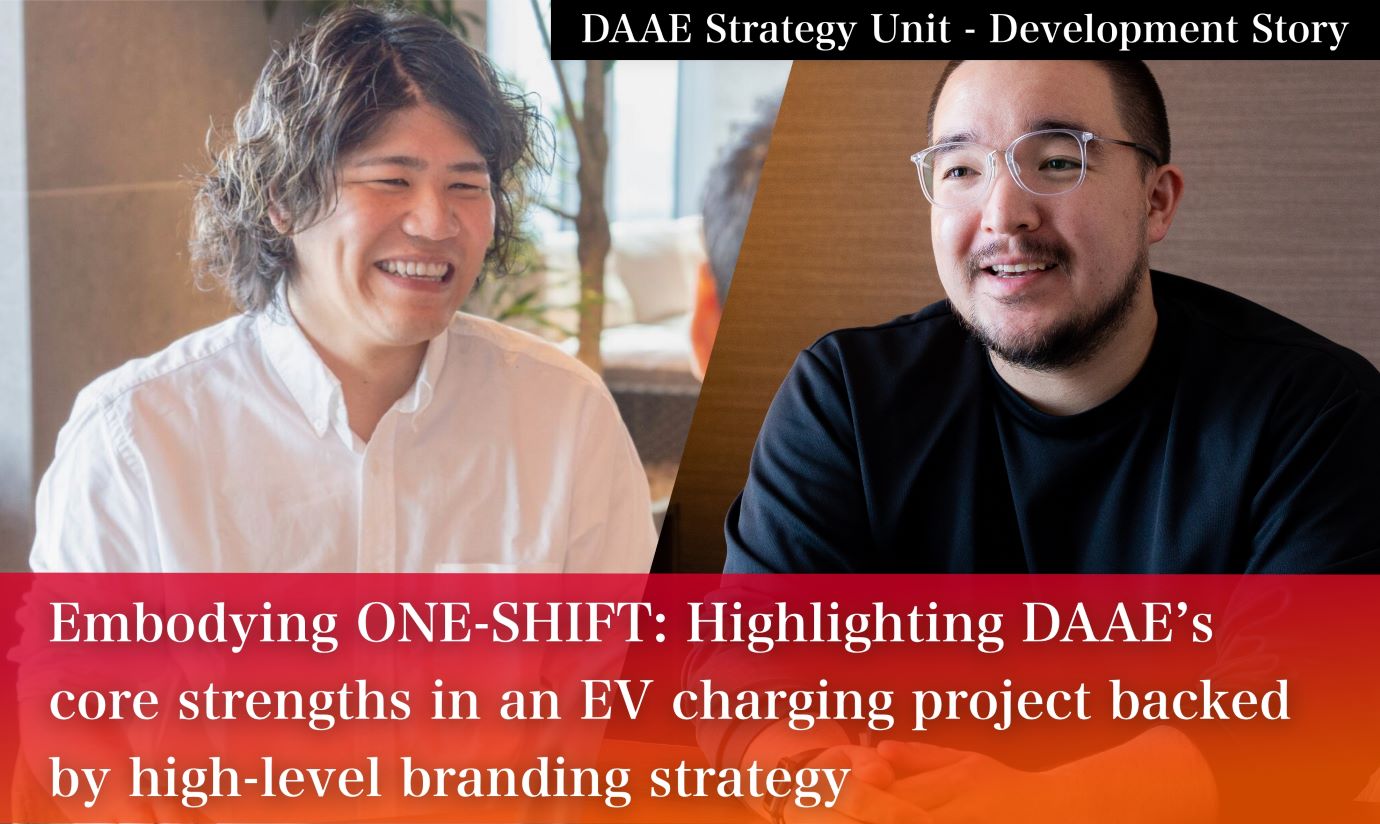
Embodying ONE-SHIFT: Highlighting DAAE’s core strengths in an EV charging project backed by high-level branding strategy
“The DAAE Strategy Unit is basically an organization that creates its own business, but regular client work brings in new stimuli that are important for business creation.”
Based on this approach, the DAAE Strategy Unit is focusing on a customer project to support the development of “treev” (ツリーブ), a new EV charging business from Chubu Electric Power Miraiz Co., Inc.
This is an important project as it is positioned as one of the company’s key strategies for achieving its goal of decarbonization.
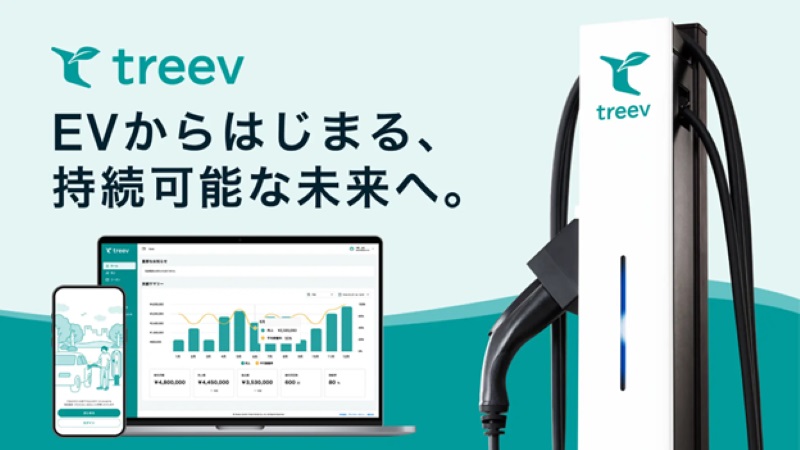
EV charging service will be provided to EV users using charging stations installed in corporate-owned parking lots.
Parking lot owners can easily install recharging stations because the burden of installing recharging stations and operating recharging services is reduced.
EV users can also easily recharge their vehicles through a dedicated application.
Using the ONE-SHIFT approach, we participate in projects like this from the very beginning and provide ongoing support for product development after launch.
Our activities leading up to the launch may include formulating business models and branding strategies, and promoting the launch by incorporating user perspectives, such as market research, competitive analysis, and persona design

For this article, we spoke to the creative director who was responsible for formulating the branding strategy, which is the most upstream process, and the front-end engineer who developed the platform for administrators, about the points they focused on, the strengths of DAAE, and their thoughts for the future.
-
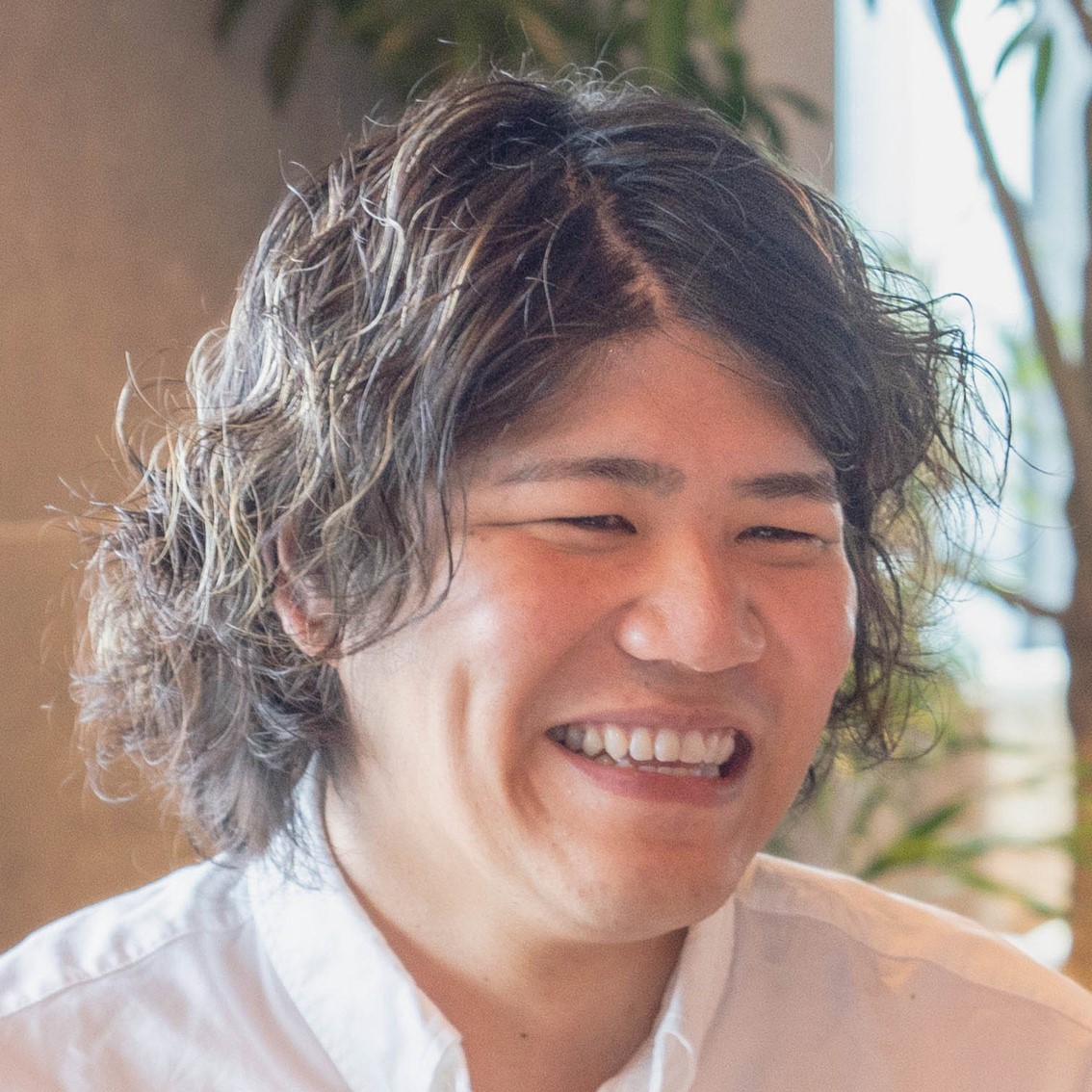
DAAE Strategy Unit, DAAE Group member, Uechi
After graduating from university, he gained a wide range of experience in branding, marketing, and advertising production (packages, web, and commercials) at an advertising agency, before joining SHIFT in October 2022. He is currently a creative director in the Strategy Department of DAAE, in charge of the “treev” project with Chubu Electric Power Miraiz Co., Inc.
-

DAAE Strategy Unit, DAAE Group member, Bradford
In 2014, he started working for a web production company and experienced all aspects of web production. After changing jobs once, he became independent as a freelancer in 2021 and worked for several clients, from small to large, with a focus on front-end technology before joining SHIFT in September 2022. Currently, he is in charge of developing systems for developers in the “treev” project with Chubu Electric Power Miraiz Co., Inc.
目次
Customers say, “The proposal was so impressive, we had to go with SHIFT”
―――I understand that in the “treev” project, you were involved from the very upstream process, such as formulating the business model and branding strategy. How did that come about?
Uechi:Originally, the RFP only listed app development and admin screen development as requirements, but we felt this alone would not be enough to support the service launch.
So, we proposed working with them to design a business model and develop a branding strategy.
As a result, the client said, “We had to choose SHIFT because the proposal was overwhelmingly better by about three steps, even though it was a competitive quote.”
And they decided to entrust us with the strategic part of the project as well.

―――“It was overwhelmingly better by about three steps” is a big compliment. What was the content of the proposal?
Uechi:We decided to support the success of the “treev” business with the ONE-SHIFT approach, so in just two weeks, we created a proposal document of about 150 pages that embodied that philosophy.
What was particularly important to us was for the participants to understand DAAE’s philosophy and approach: quickly creating a working prototype and making improvements while checking user response to ensure the service is a success.
To this end, we emphasized that BTC (Business, Technology, and Creative) should work together to “create services that sell” and grow the business.
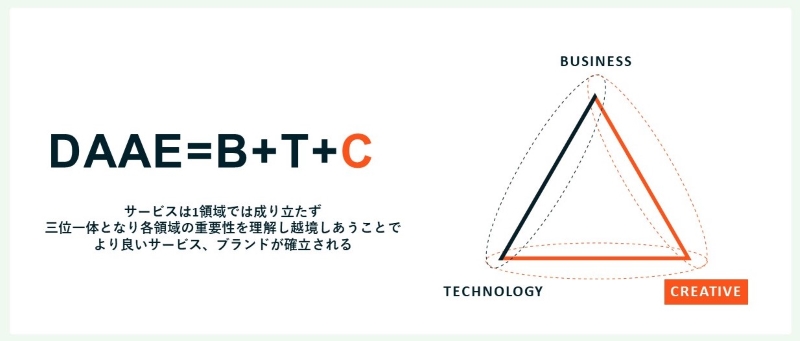
―――I see, so this is truly a project that incorporates the essence of DAAE. Could you tell us about your roles and the timing of your involvement in the project?
Uechi:I have been participating as a creative director since the proposal stage and am mainly in charge of developing the branding strategy.
In the BTC mentioned earlier, I’m responsible for the creative component.
Bradford:I have been involved as a front-end engineer since the project was decided.
My responsibility is the front-end part of the dashboard (management screen) used by parking lot owners and other administrators.
The logo creation process felt like a kind of madness from the sidelines
―――This may be a simple question, but how do you come up with a branding strategy?
Uechi:I think there are various styles and methods, but in my case, the first process is to get to know the customer well.
In this case, we began by learning about the kind of future Chubu Electric Power Miraiz was aiming for.
From there, we could confirm the significance of the new service in that context, and we articulated that in the P-MVV (Purpose – Mission, Vision, and Values) for the business.
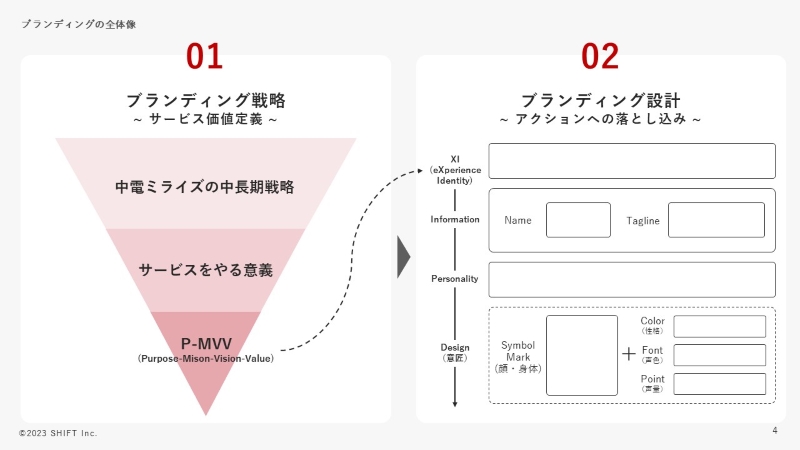
Uechi:Once we’ve done that, we start asking ourselves: “What is the actual service?”
We put words to the Experience Identity of the service and gradually work that into branding elements like the name, tagline, and personality – down to details like the symbols, colors, and fonts used.
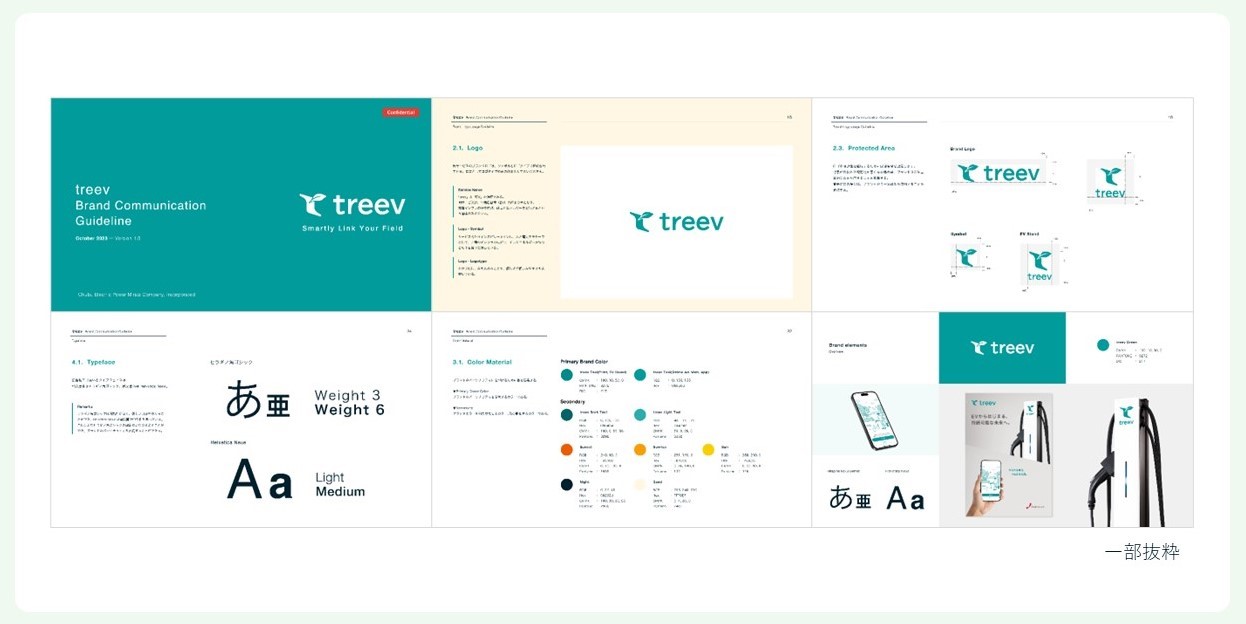
The final brand communication guidelines
―――That’s incredibly detailed…
Bradford:I think this work is only possible because of Uechi-san. He’s basically an art director.
―――What aspects did you find particularly impressive?
Bradford:I think it’s the uncompromising nature of the entire process.
For example, when it came to creating the logo, he made hundreds of design proposals and carefully compared and considered them before deciding on one.
Watching it from the sidelines, it almost felt like a kind of madness (laughs).
Instead of ideas simply appearing out of nowhere, the process involves carefully structured and logical design, which I think gives customers a strong sense of confidence.
I feel he is a genuine creator and artist who makes no compromises in transforming an image into something tangible.
Uechi:I’m honored. Creating the logo took a lot of energy.
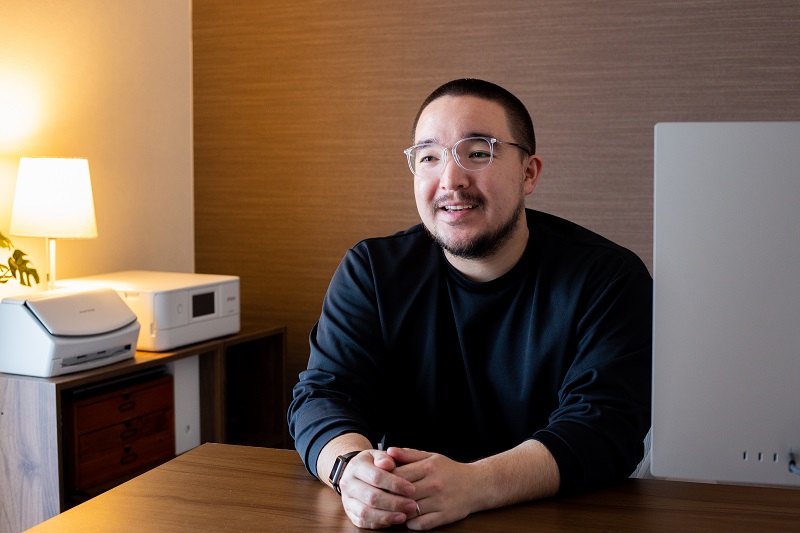
Development was a daily debate and discussion
―――I think Bradford-san’s role is to take the core brand that Uechi-san formulated and put it into a system for administrators. What were some of the difficulties you faced?
Bradford:Actually, we didn’t have that much trouble.
Uechi-san had established the core of the brand in the form of a design system, so we created the front-end components following that framework.
However, especially in the beginning, the design was not yet fixed and development was happening in parallel.
We created a wireframe-based PoC and, as the design was finalized, we incorporated it into the development process through continuous revisions.
Naturally, if the gap between development and design grows, so will the scope of the revisions. We worked through this by having daily, in-depth discussions with the people responsible for the design.
―――What is the current status of the project?
Uechi:We are still working on additional development and design.
From the beginning, we divided the project into three phases, and we have just completed the first phase, which was the service launch.
As we enter the second phase, we are currently in discussions with the client about what features should be added or improved.
Also, on the creative side, we have completed the zero-to-one phase.
Now, we are entering the one-to-ten phase, so we will also be developing and executing strategies associated with marketing, such as TV commercials and other advertising placements.
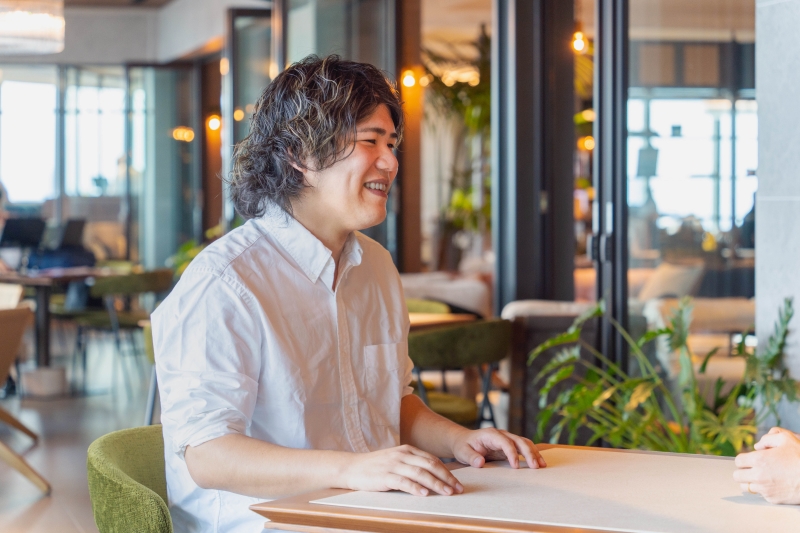
An environment that empowers you to take the lead and says, “It’s up to you – do what you think is best.”
―――Now that the first phase has ended, can you tell us about a time when you felt glad you were working on this project?
Uechi:There are many things, but getting so many additional orders was really gratifying.
From the early request to design an EV stand on short notice to tasks like stand photography, sales materials, B2B flyers, and landing pages.
We’ve had the privilege of handling a wide range of projects.

―――That’s wonderful! Finally, please tell us what makes you glad that you joined DAAE.
Bradford:As a technical person, I have nothing but good things to say.
At my previous job, I worked mainly with legacy technologies, so when I joined SHIFT, I told my boss I wanted to be assigned to a development project in a more modern environment.
DAAE has many such projects, and combined with the understanding of my boss, peers, and other members, I am encouraged to do what I want to do.
I can develop what I want as an engineer; it is a special environment.
Uechi:I’ve been in the advertising industry since I graduated, but I was often in charge of only the final, visible parts of a project. I often wondered whether I was truly providing value to users.
I wanted to design a service from scratch and take responsibility for the brand, so I switched to SHIFT.
I’m grateful that DAAE has given me the opportunity to do just that.
I feel that this is thanks to the excellent project members and the management who, at the end of the day, say, “It’s up to you – do what you think is best.”
(*The content of this article and the affiliations of the interviewees are as of the time of the interview.)








